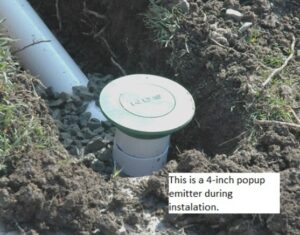Water damage can wreak havoc on commercial properties, leading to costly repairs, business interruptions, and potential health hazards. Whether it’s caused by a burst pipe, heavy rain, or a flood, a swift and effective restoration strategy is crucial. In this guide, we’ll explore the top strategies for commercial water damage restoration Scottsdale AZ, offering insights into water damage cleanup, flood damage cleanup, and how to manage flood damage efficiently.
Why Immediate Action Matters
Time is of the essence when dealing with water damage. The longer water sits, the more damage it can cause, including mold growth, structural issues, and increased repair costs. Implementing a quick and efficient response plan is key to minimizing damage and protecting your property.
1. Assess the Damage: The First Step in Water Damage Cleanup
Before diving into restoration, conduct a thorough assessment of the damage. Here’s how to approach this critical step:
• Inspect Affected Areas: Examine areas such as ceilings, walls, floors, and any equipment or inventory that may have been affected.
• Document Everything: Take photos and videos of the damage for insurance purposes. Detailed documentation can help in the claims process and provide a record of the damage.
• Identify the Source: Determine the cause of the water damage, whether it’s a leak, flood, or another issue. This helps in addressing the root problem and preventing future incidents.
2. Prioritize Safety and Containment
Safety is paramount in water damage situations. Follow these guidelines to ensure a safe cleanup process:
• Turn Off Utilities: Disconnect electricity and gas to avoid electrical hazards and reduce the risk of fire.
• Contain the Area: Use barriers, such as plastic sheeting or temporary walls, to contain the water and prevent it from spreading to unaffected areas.
• Protect Personal Health: Wear appropriate protective gear, such as gloves and masks, to prevent exposure to contaminants and mold.
3. Effective Water Extraction and Drying
Removing excess water and drying the affected areas is crucial in preventing further damage and mold growth. Consider these strategies for effective water damage cleanup:
• Use Professional Equipment: Employ high-powered water extractors, dehumidifiers, and air movers to speed up the drying process. These tools are more efficient than household appliances.
• Dry and Dehumidify: Ensure that all affected materials, including carpets, drywall, and insulation, are thoroughly dried. This helps prevent mold growth and structural damage.
• Monitor Moisture Levels: Use moisture meters to track the drying progress and ensure that all areas reach a safe level of dryness.
4. Thorough Cleaning and Sanitization
After the initial water removal and drying, it’s time to focus on cleaning and sanitizing. This step is vital for ensuring a safe and healthy environment:
• Clean Affected Surfaces: Use disinfectants and antimicrobial solutions to clean surfaces and prevent mold and bacteria growth. Pay special attention to areas that came into direct contact with water.
• Check for Mold: Inspect for mold growth, which can occur within 24 to 48 hours after water damage. Address any mold issues promptly to avoid health risks and further damage.
• Handle Contaminated Items: Dispose of any items that are beyond cleaning, such as heavily contaminated materials or damaged furniture.
5. Repair and Restoration: Bringing Your Property Back to Normal
Once the cleaning process is complete, it’s time to focus on repairs and restoration. Here’s what to consider:
• Assess Structural Damage: Have a professional inspect the structure for any damage that needs repair. This includes checking for compromised foundations, walls, and ceilings.
• Restore Affected Areas: Repair or replace damaged materials, such as flooring, drywall, and insulation. Consider upgrading to water-resistant materials to prevent future issues.
• Check Systems and Equipment: Ensure that HVAC systems, electrical wiring, and plumbing are functioning properly. Address any damage to these systems to avoid future problems.
6. Work with Professionals: When to Call in Experts
While some water damage cleanup tasks can be handled in-house, severe damage or large-scale floods often require professional assistance. Here’s why working with experts is beneficial:
• Specialized Equipment: Professionals have access to advanced equipment for water extraction, drying, and mold remediation.
• Expertise and Experience: Restoration experts have the knowledge and experience to handle complex water damage situations and ensure compliance with industry standards.
• Insurance Claims: Professionals can assist with insurance claims, providing detailed documentation and helping you navigate the claims process.
Conclusion
Effective commercial water damage restoration requires a strategic approach to ensure minimal damage and swift recovery. By following these strategies—assessing the damage, prioritizing safety, using advanced equipment, cleaning and sanitizing thoroughly, repairing affected areas, and consulting with professionals—you can effectively manage water damage cleanup Scottsdale AZ and flood damage cleanup.
Remember, prevention is also key. Regular maintenance, inspections, and investing in quality flood protection measures can help mitigate the risk of future water damage. By taking proactive steps, you’ll safeguard your property and ensure a safer, more resilient business environment.




More Stories
Louis Vuitton Wall Art: The Ultimate Statement in Luxury Interior Decor
How to Choose the Right Wedding Photographer in Denver Without Stress
What to Know Before Hiring a Gutter Company in Gainesville FL: A Friendly Guide